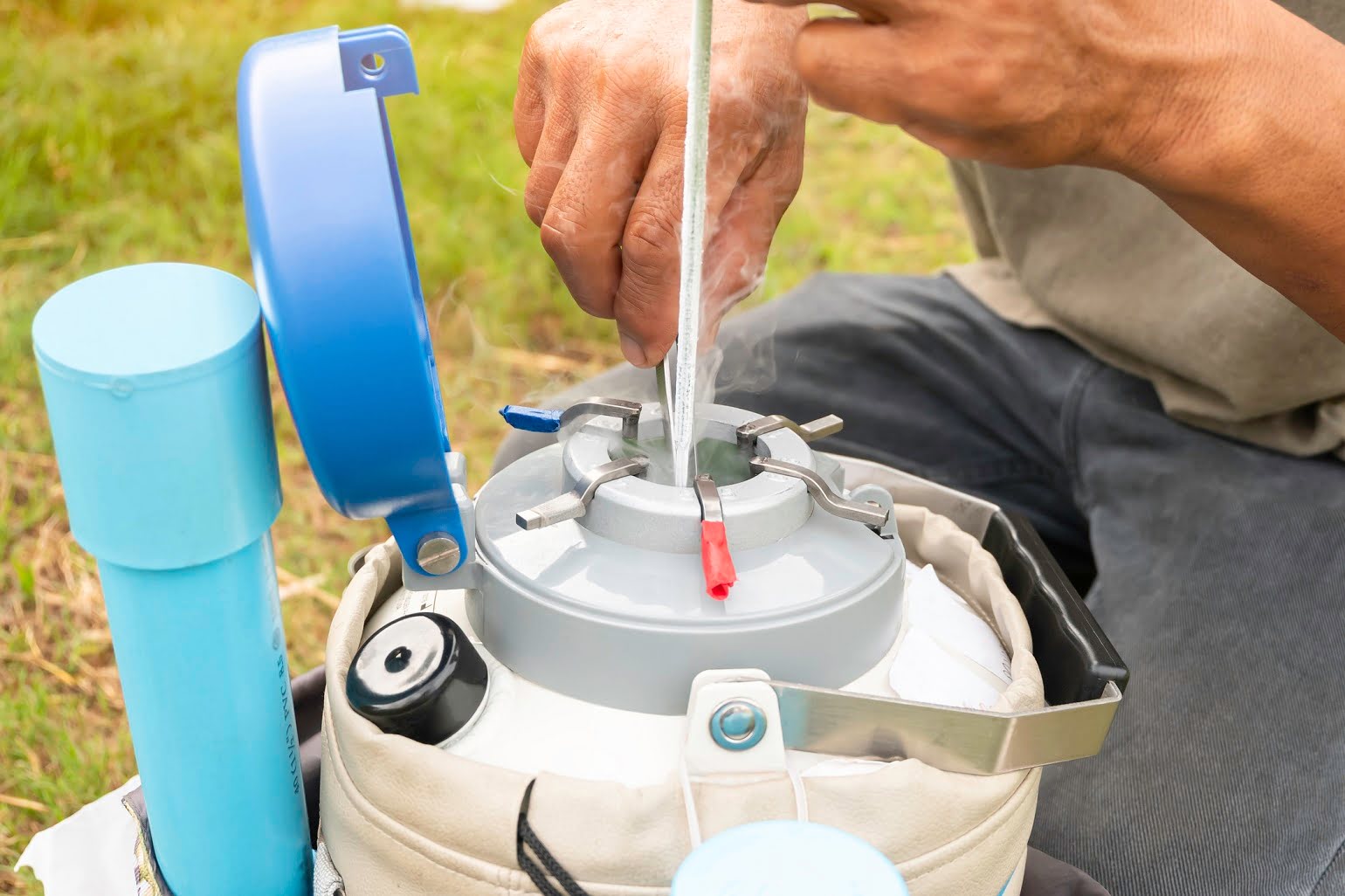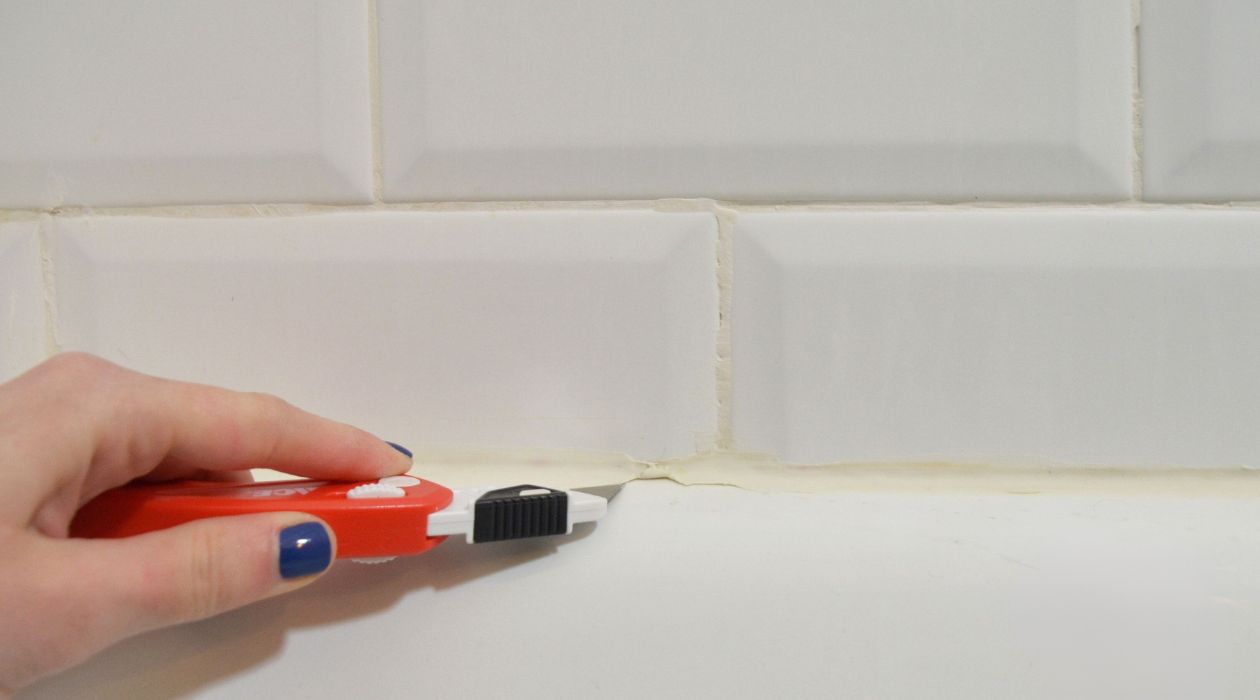Home>Articles>How To Ensure Successful Semen Storage For Animal Breeding


Articles
How To Ensure Successful Semen Storage For Animal Breeding
Modified: January 6, 2024
Learn effective techniques for storing cum in this comprehensive collection of articles.
(Many of the links in this article redirect to a specific reviewed product. Your purchase of these products through affiliate links helps to generate commission for Storables.com, at no extra cost. Learn more)
Introduction
Welcome to the comprehensive guide on how to store semen effectively. Whether you are a breeder, involved in animal husbandry, or planning to preserve your own reproductive material, proper semen storage is essential to maintain its viability and quality. This article will provide you with a detailed understanding of the basics of semen storage, methods of storing semen, choosing the right container, storage conditions, length of viability, safety tips, considerations for long-term storage, and frequently asked questions.
Semen storage is crucial for various reasons. Breeders use it to preserve the genetic material of valuable animals, allowing them to maintain and improve desirable traits in a particular breed. It also facilitates artificial insemination, a technique widely used in animal husbandry and veterinary medicine. Additionally, individuals may choose to store their semen for personal reasons, such as fertility preservation or future family planning.
To ensure successful semen storage, it is important to understand the fundamentals of semen collection and the factors that affect its quality and viability. Proper collection techniques and handling play an essential role in preserving the sperm’s integrity and functionality. Once collected, appropriate storage methods and conditions must be employed to maintain optimal semen quality.
In this guide, we will delve into the various aspects of semen storage, including the different methods available, choosing the right container, and ensuring the ideal storage conditions. We will also address safety considerations and provide tips for long-term semen storage.
Whether you are a seasoned professional or just getting started with semen storage, this article will serve as your comprehensive resource. By following the guidelines outlined here, you will be equipped with the knowledge and tools necessary to store semen effectively and maximize its viability.
Key Takeaways:
- Proper semen storage is essential for maintaining genetic material viability, whether for breeding, reproductive technologies, or future family planning. Understanding the basics, choosing the right container, and ensuring optimal storage conditions are crucial for successful semen storage.
- Safety measures, long-term storage considerations, and proper handling techniques are vital for safeguarding the quality and viability of stored semen. Collaboration with experts and regular monitoring are key to maximizing the potential for successful fertilization and reproduction.
Understanding the Basics of Semen Storage
Before delving into the intricacies of semen storage, it is important to have a clear understanding of what semen is and how it behaves outside of the body. Semen is a fluid containing spermatozoa (sperm cells) and seminal plasma, which provides nourishment and protection for the sperm. It is the means through which male reproductive material is delivered to the female reproductive system during sexual intercourse or artificial insemination.
Semen is highly perishable and sensitive to environmental conditions. Factors such as temperature, exposure to light, and oxygen levels can significantly affect its quality and viability. For this reason, proper storage techniques must be implemented to preserve its integrity.
One of the key components of successful semen storage is the preservation of sperm motility. Motility refers to the ability of sperm cells to move actively and with purpose. Without motility, sperm cells are unable to reach and fertilize an egg, rendering them useless for reproductive purposes. The goal of semen storage is to maintain as much motility as possible for extended periods of time.
The quality of semen can vary depending on various factors, including individual male fertility, reproductive health, and genetic traits. It is important to note that not all semen is equally viable or suitable for storage. Before embarking on semen storage, it is recommended to have a thorough examination of the male’s reproductive health, including semen analysis, to determine the quality and viability of the semen.
In addition to sperm motility, other factors such as sperm count, morphology (shape), and sperm viability are also crucial considerations when it comes to semen storage. These factors contribute to the overall quality and effectiveness of the stored semen.
When it comes to semen storage, time is of the essence. The longer semen remains outside the body, the greater the decline in its quality. Therefore, it is important to collect and store semen as quickly as possible after ejaculation or extraction to minimize the negative impact of environmental factors.
Now that we have a basic understanding of semen and its behavior, let’s explore the various methods and techniques used for storing semen effectively.
Preparing for Semen Collection
Before proceeding with semen collection, proper preparation is key to ensure accurate and successful results. Whether you are collecting semen from a stallion, bull, or any other male animal, following these guidelines will help optimize the quality and viability of the collected semen.
Ensure the Health and Well-being of the Male: Before attempting semen collection, it is essential to ensure that the male is in good overall health. Regular veterinary check-ups and screenings can help identify any potential issues that may affect semen quality or fertility. It is also important to provide a suitable environment that minimizes stress and promotes optimal reproductive function.
Implement Proper Hygiene Practices: Cleanliness is crucial during the semen collection process. Both the male and the person collecting the semen should maintain good hygiene to reduce the risk of contamination. Hands and equipment should be thoroughly washed and sanitized before and after each collection.
Choose an Appropriate Collection Method: There are different methods for semen collection, depending on the species and the individual animal. The most common methods include artificial vagina (AV), electroejaculation, and manual stimulation. The choice of method should be based on the animal’s comfort and the expertise of the collector.
Follow Collection Procedures: It is important to follow proper collection protocols to ensure the accuracy and integrity of the collected semen. This includes using a sterile collection container or AV, timing the collection correctly, and avoiding excessive pressure or restraint on the male during the process. Collecting multiple ejaculates in separate containers is often recommended for quality control purposes.
Protect the Semen from Heat Stress: Heat stress can have a negative impact on semen quality. To ensure optimal results, it is important to keep the collected semen away from extreme temperatures and sunlight. Using insulated containers or coolers with ice packs can help maintain the desired storage temperature during transport.
Label and Document: Accurate record-keeping and labeling are essential for proper semen storage and identification. Each collected sample should be clearly labeled with the animal’s identification details, collection date, and any other relevant information. This will help prevent mix-ups and ensure proper traceability.
Work with a Professional: If you are unsure or inexperienced in semen collection techniques, it is highly recommended to seek assistance from a professional. Veterinarians or reproductive specialists have the expertise and equipment necessary to perform semen collection and handle the process with care and precision.
By adhering to these preparation guidelines, you can help maximize the quality and viability of the collected semen, setting the stage for successful semen storage and future reproductive purposes.
Methods of Storing Semen
Once semen has been collected, proper storage methods need to be implemented to maintain its viability and quality. There are several techniques available for storing semen, each with its own advantages and considerations. Let’s explore some of the commonly used methods:
Short-Term Storage: Short-term semen storage is typically used when immediate insemination or transportation is required. The most common method is to store the semen at a controlled temperature in a short-term storage container, such as a semen straw or vial. These containers are designed to protect the semen from temperature fluctuations and physical damage.
Extended Short-Term Storage: If semen needs to be stored for a slightly longer period, such as a few days to a week, extended short-term storage methods can be employed. This involves using specialized diluents or extenders that help preserve the quality and viability of the semen. These extenders provide added protection, nutrients, and antioxidants to the sperm, extending their lifespan.
Cryopreservation: Cryopreservation is a long-term storage method that involves freezing the semen at very low temperatures (-196°C) using liquid nitrogen. This technique allows semen to be stored for an extended period, typically years, while maintaining its viability. Cryopreservation can be beneficial for breeders, genetic preservation, and animal breeding programs. However, not all species or individuals respond equally well to cryopreservation, and the success rate can vary.
Sexed Semen: Sexed semen is a specialized form of semen storage that involves separating the sperm based on their sex chromosomes. This allows breeders to select the desired gender of offspring. Sexed semen typically has shorter lifespan and reduced fertility compared to conventional semen, so it requires specific storage and handling techniques to optimize its effectiveness.
In-Body Storage: In some cases, semen can be stored within the reproductive tract of female animals. This method, known as in-body storage, is typically used in assisted reproductive technologies such as embryo transfer or intracytoplasmic sperm injection (ICSI). The semen is introduced directly into the female’s reproductive tract, where it can be stored until fertilization occurs.
It is important to note that each method has its own advantages and limitations, and the choice of technique should be based on factors such as intended use, available resources, and the characteristics of the semen being stored. Consulting with a reproductive specialist or veterinarian can help determine the most suitable storage method for your specific needs.
Regardless of the method chosen, proper handling, labeling, and storage conditions are essential to safeguard the quality and viability of the semen. In the next section, we will discuss the considerations for selecting the right container for semen storage.
Choosing the Right Container for Semen Storage
The choice of container for semen storage is crucial as it directly impacts the quality and viability of the stored semen. The container should provide protection against temperature fluctuations, protect the semen from physical damage, and maintain a sterile environment. Let’s explore some factors to consider when selecting the right container for semen storage.
Sterility: The container should be sterile to prevent contamination that can negatively affect semen quality. Sterility can be ensured by using containers specifically designed for semen storage that have been sterilized or are disposable.
Material: The material of the container is important as it should be compatible with the semen and withstand the storage conditions. Common materials used for semen storage containers include glass, plastic, and cryogenic vials. Glass is often chosen for its durability and resistance to temperature changes, while plastic containers offer convenience and ease of use.
Sealing: The container should provide an airtight seal to prevent oxygen exposure, which can be detrimental to semen viability. A secure seal also prevents leakage and contamination during transportation and handling.
Temperature Regulation: The container should be able to maintain a stable temperature during storage. This can be achieved using insulation or by using specific containers designed for temperature-controlled storage, such as liquid nitrogen tanks for cryopreserved semen.
Size and Volume: Consider the volume of semen you are planning to store when selecting the container size. It should provide enough space to accommodate the required amount of semen comfortably without overcrowding. Additionally, consider the ease of accessing and retrieving semen from the container.
Labeling: The container should allow for clear and accurate labeling. Proper labeling ensures traceability, prevents mix-ups, and allows for easy identification of the stored semen. Additionally, choose containers that allow for easy attachment of labels or tags.
Transportation: If you need to transport the semen, consider a container that offers appropriate protection during transit. This may include insulated containers with secure closures or specialized shipping containers designed for semen transportation.
Cost: Cost is an important consideration, especially if you have a large quantity of semen to store. Balancing the quality and suitability of the container with your budget is essential. It is important not to compromise on the quality of the container to ensure optimal semen storage and viability.
Consultation: If you are unsure about the most appropriate container for your specific needs, consulting with a reproductive specialist, veterinarian, or experienced breeder can provide valuable guidance based on their expertise and practical experience.
Choosing the right container for semen storage is a critical step in preserving the viability and quality of the collected semen. By considering the factors mentioned above, you can select a container that provides the necessary protection, sterility, and storage conditions for successful semen storage.
Proper Storage Conditions for Semen
Once semen has been collected and placed in the appropriate container, it is vital to store it under proper conditions to maintain its viability and quality. The storage conditions directly impact the longevity and integrity of the sperm. Let’s explore the key factors to consider when establishing the proper storage conditions for semen.
Temperature: Temperature control is crucial for semen storage. The optimal temperature varies depending on the storage method. For short-term storage, the temperature should be maintained between 15-20°C (59-68°F), which is close to the physiological temperature of the species being stored. For cryopreserved semen, it needs to be stored at ultra-low temperatures of -196°C (-321°F) using liquid nitrogen or specialized cryogenic freezers.
Light Exposure: Semen is sensitive to light exposure, especially ultraviolet (UV) rays. Exposure to direct sunlight or fluorescent lighting can damage the sperm cells and reduce their viability. It is important to store the semen in a dark environment or in containers that provide light-blocking properties.
Air Quality and Oxygen Levels: Oxygen exposure can negatively impact semen quality and viability. It is crucial to store semen in containers that minimize oxygen exposure. The use of airtight seals and appropriate storage containers helps maintain an optimal oxygen environment for semen storage. Additionally, storing semen in an oxygen-depleted or modified atmosphere can further enhance its longevity.
Humidity: Humidity levels should be controlled to prevent moisture from affecting the semen. High humidity can lead to semen deterioration and the growth of harmful microorganisms. It is crucial to store semen in a dry environment with low humidity levels to ensure the safety and quality of the stored sperm.
Stability and Consistency: The storage environment should be stable and consistent, without severe fluctuations in temperature, humidity, or other environmental factors. Sudden changes in conditions can cause stress to the sperm cells, leading to a decline in viability and quality. Constant monitoring and maintaining a stable storage environment are essential for preserving semen over extended periods.
Storage Equipment and Facilities: The use of appropriate storage equipment and facilities is crucial to ensure proper semen storage conditions. This may include specialized refrigerators or freezers for short-term storage, or cryogenic storage tanks for long-term storage using liquid nitrogen. It is important to regularly monitor and calibrate the equipment for optimal performance.
Record-Keeping: Accurate record-keeping is essential for proper semen storage. Each sample should be labeled with relevant information, including the donor’s identification, collection date, and any additional details. This allows for traceability and ensures that the stored semen can be easily identified and tracked.
It is worth noting that different species or individual animals may have specific storage requirements, so it is important to consult with a reproductive specialist or veterinarian familiar with the species to determine the optimal storage conditions.
By ensuring the proper storage conditions, you can maximize the longevity and quality of the stored semen, facilitating successful insemination or future reproductive use.
Store cum in a clean, airtight container such as a sperm bank collection cup or a sterile specimen cup. Keep it at body temperature (around 98.6°F) and transport it to a sperm bank or fertility clinic as soon as possible for storage.
Length of Semen Viability
Understanding the viability of semen is crucial when it comes to successful semen storage and reproductive purposes. The length of semen viability refers to the duration during which the sperm cells remain functional and capable of fertilizing an egg. The viability of semen can vary depending on various factors, including the species, individual characteristics, storage method, and environmental conditions.
For short-term storage, where semen is stored at controlled temperatures between 15-20°C (59-68°F), the viability can typically range from a few hours to a few days. The exact duration depends on the specific species and individual variability. It is important to note that semen viability starts to decline as soon as the semen leaves the male’s body. Therefore, collecting and properly storing the semen as quickly as possible is critical to preserve its viability.
When it comes to cryopreserved semen, the viability can be significantly extended. Cryopreservation involves freezing the semen at ultra-low temperatures of -196°C (-321°F) using liquid nitrogen. This technique allows for long-term storage, typically extending the viability of semen for years. The exact lifespan of cryopreserved semen can vary depending on several factors including the species, individual characteristics, and cryopreservation techniques. However, it is important to note that not all sperm cells survive the freezing and thawing process, and there can be a decline in overall viability compared to fresh semen.
It is important to mention that while semen may remain viable for a certain duration, the fertility potential may still vary. The ability of the sperm cells to successfully fertilize an egg depends on factors such as sperm count, motility, and morphology, in addition to viability. Therefore, the viability of semen should not be the sole factor considered for successful reproduction. Semen analysis, including assessments of the mentioned parameters, should be conducted to ensure the semen’s fertility potential.
It is worth noting that individual variability exists in semen viability and fertility potential. Some males may have semen with high viability and fertility even after extended storage, while others may experience a decline in viability even with short-term storage. It is crucial to consider the individual characteristics of the male and conduct regular semen analysis to monitor the semen’s quality over time.
Ultimately, proper semen collection, handling, and storage techniques should be implemented to maximize the viability and fertility potential of the stored semen. Optimal storage conditions, such as temperature control, protection from light and oxygen exposure, and maintaining stability, are essential in preserving the semen’s viability for as long as possible.
Consulting with a reproductive specialist, veterinarian, or experienced breeder can provide valuable insights and guidance regarding the specific viability and storage considerations for the particular species and individual animal.
Safety Tips for Storing Semen
When it comes to storing semen, ensuring safety is paramount to maintain its quality and protect against any potential risks. Whether you are dealing with fresh semen or cryopreserved samples, it is important to follow these safety tips to ensure proper handling and storage:
1. Maintain a sterile environment: Semen samples are highly susceptible to contamination, which can compromise their quality. Always work in a clean and sterile environment, washing your hands thoroughly before handling the samples, and using sterile equipment and containers.
2. Use appropriate personal protective equipment (PPE): Wear gloves and other necessary personal protective equipment to avoid direct contact with the semen. This protects both you and the samples from potential transmission of pathogens or contaminants.
3. Handle with care: Semen samples are delicate, and rough handling can damage the sperm cells, reducing their viability. Avoid excessive shaking or jostling of the samples, and use caution when sealing containers or tubes to prevent leaking or spilling.
4. Store at the proper temperature: Maintain the recommended storage temperature for the semen samples, whether it is short-term storage or cryopreservation. Temperature fluctuations can have a detrimental impact on semen viability, so it is crucial to use appropriate storage facilities and equipment to maintain the desired temperature consistently.
5. Protect from light exposure: Semen samples are sensitive to light, especially ultraviolet (UV) rays. Store the samples in light-blocking containers or in areas shielded from direct sunlight to prevent damage to the sperm cells.
6. Regularly check storage equipment: Ensure that your storage equipment, such as refrigerators, freezers, or liquid nitrogen tanks, are properly maintained and regularly checked for temperature stability. Keep a log of temperature monitoring to ensure any deviations are detected and addressed promptly.
7. Label properly: Accurate labeling is crucial for maintaining traceability and preventing mix-ups. Clearly label each container with essential information such as the donor’s identification, collection date, and any other relevant details. This ensures proper identification and minimizes the risk of using the wrong samples.
8. Keep records: Maintain detailed records of semen collections, storage, and any other relevant information. This includes information on the donor animal, collection dates, storage conditions, and any additional treatments or modifications. This record-keeping helps in tracking and monitoring the integrity and quality of the stored semen.
9. Regularly review and discard: Periodically review the stored semen and discard any samples that have reached their expiration dates or are no longer viable. Proper inventory management is essential to ensure the availability of viable and quality semen when needed.
10. Consult a professional: If you have any concerns or doubts about handling or storing semen, consult with a reproductive specialist, veterinarian, or experienced breeder. They can provide guidance based on their expertise and experience to ensure proper semen handling and storage techniques.
By following these safety tips, you can maintain the integrity and quality of the stored semen while minimizing the risks associated with mishandling or improper storage. This ensures that the semen remains viable for successful reproductive purposes.
Considerations for Long-Term Semen Storage
Long-term semen storage is a valuable tool for preserving genetic material and ensuring its availability for future use. Whether you are storing semen for breeding purposes, genetic preservation, or research, there are several important considerations to keep in mind for successful long-term storage:
1. Cryopreservation: Cryopreservation is the preferred method for long-term semen storage. Freezing the semen at ultra-low temperatures using liquid nitrogen (-196°C/-321°F) helps maintain its viability and quality over an extended period. Proper cryopreservation techniques and equipment are essential to ensure successful storage and revival of the sperm cells when needed.
2. Choose a reputable facility: If you do not have the necessary equipment or expertise for cryopreservation, consider utilizing the services of a reputable semen storage facility or reproductive center. These facilities have the specialized equipment, expertise, and quality control procedures in place to ensure the long-term viability and secure storage of the semen.
3. Quality Control: Regular quality control measures, including semen analysis, should be conducted to monitor the viability and integrity of the stored semen. This ensures that any potential issues are identified and addressed promptly, allowing for adjustments in storage techniques or selection of samples for use in selective breeding programs.
4. Regular Inventory Management: Maintain an organized inventory system to keep track of stored semen samples. Label containers clearly and keep records of each sample, including donor identification, collection date, cryopreservation date, and any other relevant information. Regularly review and update the inventory to ensure accurate tracking and removal of expired or low-quality samples.
5. Backup and Redundancy: When storing genetic material, it is crucial to have backup systems and redundancy in place. This prevents loss of valuable genetic information due to equipment failure, natural disasters, or other unforeseen circumstances. Consider storing duplicate samples at separate facilities to minimize the risk of complete loss.
6. Record-Keeping and Documentation: Accurate record-keeping is essential for long-term semen storage. Document information such as the donor’s details, collection and cryopreservation dates, and any treatments or modifications performed. This helps ensure traceability and provides a comprehensive history of the stored semen, facilitating future decision-making processes.
7. Ethical and Legal Considerations: Understand and comply with the ethical and legal considerations for storing genetic material, including consent requirements, ownership rights, and regulations for the use and exportation of stored semen. Familiarize yourself with the specific guidelines and regulations governing the species and geographic location where the semen is stored.
8. Regular Evaluation and Assessment: Periodically evaluate the stored semen to assess its quality, viability, and potential for successful use. This can include conducting fertility tests and genetic screenings to ensure the stored genetic material maintains its desired traits and integrity.
9. Consultation and Collaboration: Collaborate with experts in reproductive technology, reproductive veterinarians, or geneticists to stay informed about advancements in long-term semen storage techniques and best practices. These professionals can provide guidance and support during the storage process and help optimize the use of the stored genetic material.
10. Communicate Future Plans: If you have specific plans for the use of the stored semen, communicate your intentions and goals with the storage facility or relevant parties involved. This ensures seamless coordination and increases the likelihood of successful utilization of the genetic material when it is eventually employed.
By considering these factors, you can establish a comprehensive approach to long-term semen storage that maximizes the viability and value of the stored genetic material for future use in selective breeding, research, or other reproductive purposes.
Read more: How To Successfully Install An EMT Conduit
Frequently Asked Questions (FAQs) about Semen Storage
1. How long can fresh semen be stored?
Fresh semen can typically be stored for a few hours to a few days, depending on the species and storage conditions. The viability of fresh semen starts to decline as soon as it leaves the male’s body, so it is important to store it as quickly as possible to maximize its quality and viability.
2. What is cryopreservation?
Cryopreservation is a long-term semen storage technique that involves freezing the semen at ultra-low temperatures using liquid nitrogen (-196°C/-321°F). Cryopreserved semen can be stored for an extended period, typically years, while maintaining its viability and quality.
3. How long can cryopreserved semen be stored?
Cryopreserved semen can be stored for several years, and in some cases, even decades, while maintaining its viability and quality. The viability of cryopreserved semen can vary depending on factors such as the species, individual characteristics, and cryopreservation techniques.
4. Can frozen semen be as effective as fresh semen for breeding purposes?
Yes, frozen semen can be as effective as fresh semen for breeding purposes. Proper cryopreservation techniques and protocols ensure the viability of the frozen sperm. However, it is important to note that not all sperm survive the freezing and thawing process, and there can be a decline in overall viability compared to fresh semen.
5. What are the benefits of storing semen?
Storing semen offers several benefits, including preserving valuable genetics, allowing for selective breeding, facilitating reproductive technologies such as artificial insemination, and providing options for fertility preservation or family planning purposes.
6. Do different species have different semen storage requirements?
Yes, different species may have varying semen storage requirements. Factors such as storage temperature, container selection, and viability vary depending on the species. It is important to consult with a veterinarian or reproductive specialist familiar with the specific species’ requirements for proper semen storage.
7. Can semen lose viability or quality during storage?
Yes, semen can lose viability and quality during storage if not properly handled and stored. Factors such as temperature fluctuations, light exposure, and contamination can affect the semen’s integrity. Proper storage techniques and conditions minimize the risk of degradation and ensure the maintenance of semen quality.
8. Can stored semen be used for multiple breedings?
Yes, stored semen can typically be used for multiple breedings, depending on the available quantity and the desired reproductive goals. However, it is important to carefully consider the viability and quality of the stored semen before each use to optimize the chances of successful fertilization.
9. Are there any risks associated with semen storage?
The risks associated with semen storage are primarily related to the quality and viability of the stored semen. Proper storage techniques help mitigate these risks, but it is essential to monitor the semen’s quality regularly and ensure compliance with ethical considerations and legal regulations regarding the storage, use, and disposal of genetic material.
10. Can stored semen be transported to different locations?
Yes, stored semen can be transported to different locations, provided proper packaging and temperature control measures are in place. It is important to follow guidelines for shipping and transportation to maintain the viability and integrity of the stored semen during transit.
These are just a few common questions regarding semen storage. If you have more specific inquiries or concerns, it is recommended to consult with a reproductive specialist, veterinarian, or experienced breeder who can provide tailored guidance based on your specific circumstances.
Conclusion
Proper semen storage is vital for preserving the viability and quality of genetic material, whether for breeding, reproductive technologies, or future family planning. This comprehensive guide has provided valuable insights into the basics of semen storage, including the importance of understanding semen behavior, preparing for semen collection, and the various methods and containers used for storing semen effectively.
We have explored the significance of maintaining optimal storage conditions, such as temperature control, protection from light exposure, and the need for a sterile environment. Additionally, safety tips and considerations for long-term semen storage have been discussed to ensure the integrity, viability, and traceability of the stored semen samples.
By following the guidelines outlined in this article, you can safeguard the quality of semen and maximize its potential for successful fertilization and reproduction. Regular semen analysis, collaboration with experts, and proper record-keeping will help monitor the viability and integrity of the stored semen over time.
Remember, each species may have unique considerations and requirements when it comes to semen storage. Consulting with a reproductive specialist, veterinarian, or experienced breeder familiar with the specific species can provide valuable guidance tailored to your specific needs.
Whether you are involved in animal husbandry, breeding programs, or planning for future family planning, proper semen storage techniques will play a crucial role in preserving genetic potential and ensuring successful reproductive outcomes. By applying the best practices outlined in this guide, you can confidently navigate the process of semen collection, storage, and utilization, and contribute to the success and advancement of the field of reproductive technology.
Now, armed with this knowledge, you are ready to embark on your journey of successful semen storage and contribute to the preservation and enhancement of valuable genetic resources.
Frequently Asked Questions about How To Ensure Successful Semen Storage For Animal Breeding
Was this page helpful?
At Storables.com, we guarantee accurate and reliable information. Our content, validated by Expert Board Contributors, is crafted following stringent Editorial Policies. We're committed to providing you with well-researched, expert-backed insights for all your informational needs.














0 thoughts on “How To Ensure Successful Semen Storage For Animal Breeding”